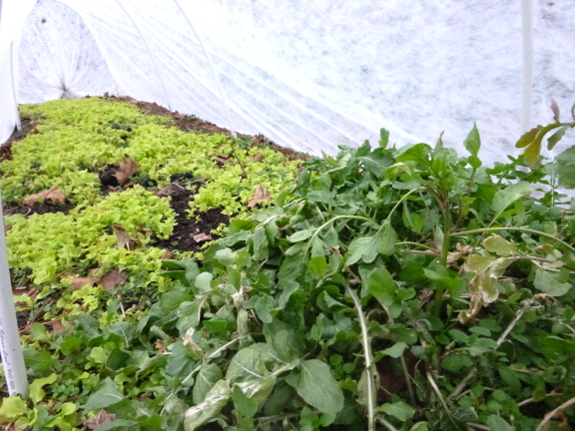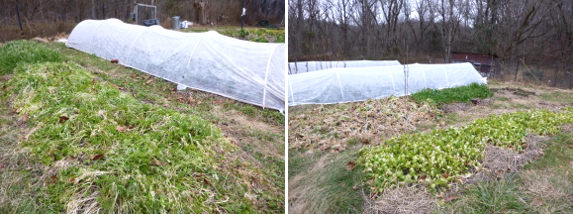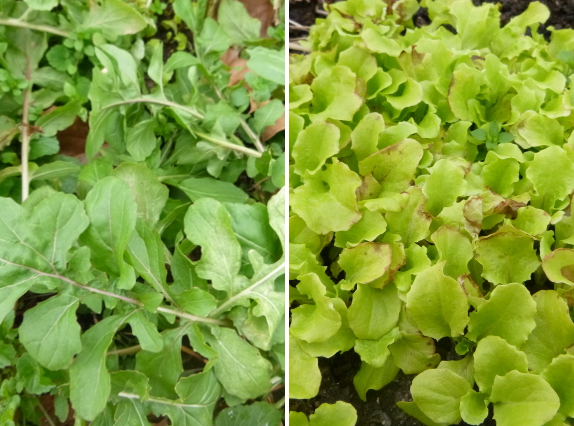
Time to eat out of the quick hoops

The time has come to delve into the quick hoops....

Beyond our
frost-protected areas, the garden is pretty much dead. There are still
hints of green here and there, but most plants are too damaged to be
easily harvestable and even the most winter-hardy kales and Swiss chard
aren't worth eating. (Well, Artemesia begs to differ, but this is meant
to be a goat-free post....)

On the other hand, under the quick hoops, the world is much brighter. Yes, that 8-degree night did
damage even my protected greens more than I would have liked, but
there's plenty of delicious lettuce, arugula, and kale just waiting for
harvest anyhow.
Ready for some
nitty-gritty details? We cut new fabric for our quick hoops this year,
meaning that the first round of fabric lasted 36 months. When I first
started with quick hoops, I estimated that our supplies cost 29 cents per square foot,
which comes to about 10 cents per square foot per year over the
three-year life span of the fabric. (Yes, that's an overestimate of the
cost since I'll keep using the non-fabric parts of the quick hoops for
many years to come, but you can think of that as a worst-case scenario.)
Would you pay $4.50 plus an hour of your time for a 15-foot by 3-foot
bed of fresh salad greens ready at the beginning of December? I know we
would! That's why quick hoops continue to be one of my favorite parts of
our gardening year even though they cost money and I'm a certified
skinflint.
Want more in-depth information? Browse through our books.
Or explore more posts by date or by subject.
About us: Anna Hess and Mark Hamilton spent over a decade living self-sufficiently in the mountains of Virginia before moving north to start over from scratch in the foothills of Ohio. They've experimented with permaculture, no-till gardening, trailersteading, home-based microbusinesses and much more, writing about their adventures in both blogs and books.
Want to be notified when new comments are posted on this page? Click on the RSS button after you add a comment to subscribe to the comment feed, or simply check the box beside "email replies to me" while writing your comment.
- Remove comment
- Remove comment
 greens. Add to that the time it takes to go to the store an back taking away time to do other more fun chores on the farm!!!
greens. Add to that the time it takes to go to the store an back taking away time to do other more fun chores on the farm!!!
- Remove comment
